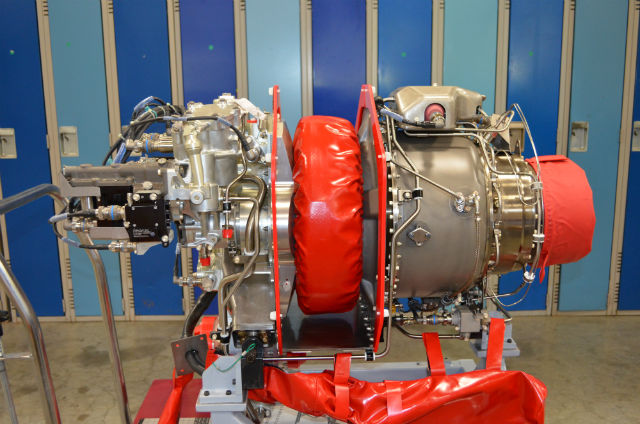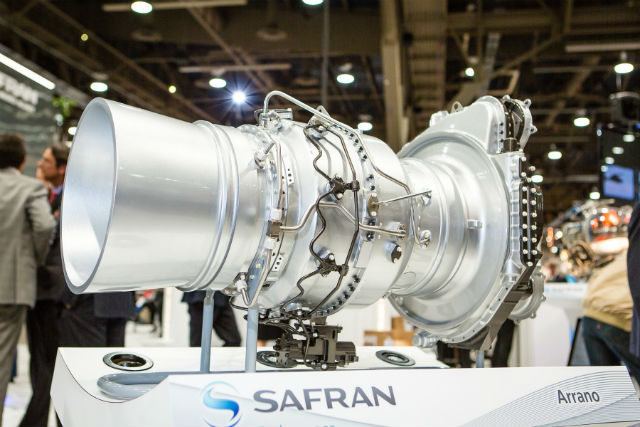Turbomeca continues to make progress with a number of its current helicopter engine developments while also working towards the launch of a family of next-generation rotorcraft powerplants.
The top priority for the Bordes, southwest France-based manufacturer, however, is work on the Arrius 2R turboshaft that will power Bell Helicopter’s 505 Jet Ranger X.
Cyril Poetsch, vice-president programmes at Turbomeca, says the new 504shp (376kW) engine is “really in the spotlight” for the company because it is the first time it has worked together with the US airframer on a programme.
The engine is “perfectly on track”, he says, with the first flight-test unit delivered to Bell’s Mirabel, Canada facility in late August.
“The next step for us is the ramp-up,” says Poetsch. “We are preparing for production and most of all we are focusing on reliability at entry into service of this new engine. We want a perfectly smooth and flawless engine.”
Changes over earlier Arrius powerplants include a new gearbox and the addition of the control system from the more powerful Arriel 2D/E models.
Development of the 2R has been particularly rapid, he adds. The first test engine was handed over just 18 months after the signature of the contract between the partners.

Bell Helicopter
Although several iterative developments of existing engines are also in the pipeline – notably the Ardiden 3C for the Avicopter AC352 and 3G model for the Kamov Ka-62, as well as the Arrius 2B2+, which powers the Airbus Helicopters EC135 T3 – the next big step is the 1,100shp Arrano 1A, which will be the second engine on the latter airframer’s X4 – a medium-class helicopter to replace the venerable Dauphin family.
Three engines are currently in the ground-test phase, says Poetsch, allowing Turbomeca to “demonstrate the performance of this engine”.
On the Arrano 1A, he says: “We are confident that we can reach what we have announced, especially on the fuel consumption. We have demonstrated a 10-15% increase in performance on specific fuel consumption compared with the competitor in this range.”
That competitor is the Pratt & Whitney Canada PW210, which is the lead engine on the X4.
Technologies for the Arrano have been drawn from Turbomeca’s Tech 800 demonstrator programme. Key improvements include a new compressor, enhanced combustion chamber and a single-stage hot section turbine.

Turbomeca
“Really, we have increased by a step the performance, the fuel consumption and the power-to-weight ratio,” says Poetsch.
Turbomeca hopes to ship the first flight-test engines by the of 2015 or early 2016. Although it the Arrano will enter service later than the PW210-equipped X4, Poetsch feels the fuel-burn advantage will give it an edge. “It is better to come to the market at the proper time with the best engine than to do so [without] the best engine.”
In parallel with the short-term activity, however, Turbomeca is planning to launch later this decade a new family of turboshafts in the 2,000-3,000shp range. These could be ready to enter the development phase in around two to three years, says Poetsch, depending on market requirements.
The new engines would be suited to both super-medium and heavy types, says Poetsch. Speculation has already centred on Airbus Helicopters’ plans to replace its Super Puma family, with work believed to have commenced on a programme known as the X6, an 11t rotorcraft to debut in around 2017.
In the interim, however, the Marignane-based manufacturer will introduce an extended-range variant of the type called the EC225e.
This features the Makila 2B powerplant, the latest iteration of Turbomeca’s 2,000shp-plus engine. Power has been increased by around 7% over the previous A2A model, thanks to changes to the combustion chamber and materials used in the hot section.
The first flight-test engine was delivered to Airbus Helicopters in July, says Poetsch.
Source: FlightGlobal.com
















